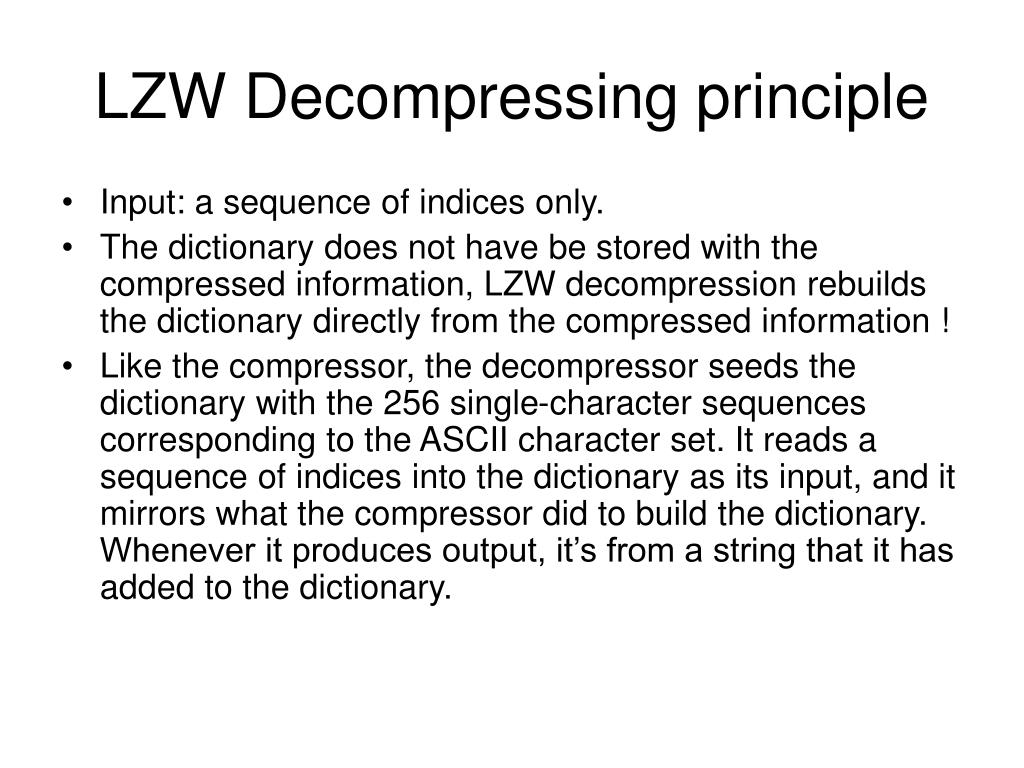

Often the compressed data is made entirely of codewords, even non-repeating strings, which means that initially compression can sometimes be rather poor. Whether the codestream is made partly or entirely of codewords.

Sometimes the dictionary is 'reset' when it reaches too large a size. the DEFLATE algorithm.) usually rely on several compression methods at once. (512, 1024.) Unlimited implementations are rare as modern methods (e.g.

Many older implementations with less resources were forced to cap the dictionary at a certain size, usually a power of two entries long. Some implementations start with no dictioanry at all, others set a number of entries, usually 255, covering all possible 1-byte values. Just how large the initial dictionary is varies. The following points differ between implementations: The advantage of this method is that the efficiency of compression increases as the amount of data to compress increases.
#Lzw decompressor download code#
(As an example dictionary entry 42 could represent the string 'life', thus whenever the code '42' is encountered the string 'life' is added to the decompressed data.) In this it behaves more like one would expect a dictionary to work when a codeword is found in the data, it is looked up in the dictionary and the corresponding string copied to output. In this approach the dictionary is separate from the data being decompressed, that is it is stored in a separate location in memory.


 0 kommentar(er)
0 kommentar(er)
